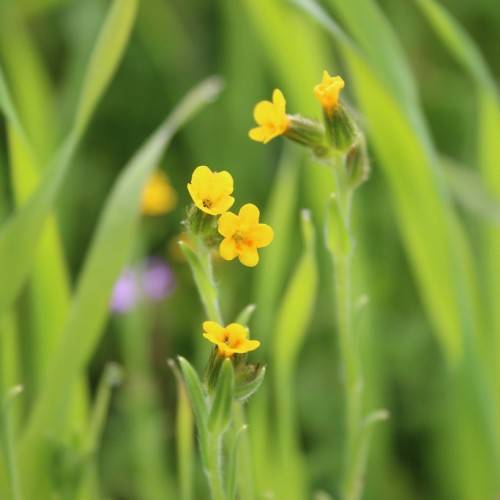
Common Fiddleneck
Amsinckia intermedia
Watering:
Minimal
Hardiness Zone:
Sun:
full sun,part shade
Fruits:
Fruits Ready In Fall
Leaf:
Yes
Growth Rate:
Low
Drought Tolerant:
Yes
Salt Tolerant:
Yes
Thorny:
Yes
Care Level:
Medium
watering
American Hog Peanut should be watered when the top 2-3 inches of soil are dry. The plant prefers regular, even watering. During the hotter months, water the plant more often, while during cooler months water less frequently. Pay attention to the weather and adjust your watering accordingly. Do not over water, as this can cause root rot. Instead, let the soil dry out a bit between waterings.
sunlight
American Hog Peanuts, which is in the pea family, need good sunlight for growth and development. It thrives in full sun when grown in moist soil with good drainage. They can also tolerate partial shade, but they will reach a maximum abundance under full sun. During the spring and summer, the plant should get at least 5 hours of direct sun a day. During the winter season, direct sunlight isn't as important and would be ideal if it got 2 or 3 hours of direct sunlight.
pruning
American Hog Peanut is a low-growing, vining plant that produces small, purple flowers in summer and small, edible seed pods in the fall. Pruning for this species should be done lightly and in the late spring or early summer. Prune plants to control growth, remove dead or damaged stems and maintain desired shape. The vines may be cut back to 4-6 inches from the ground to encourage new shoots. You may need to provide some additional support with stakes or trellises to keep the weight of the vines manageable. Be sure to sterilize pruning tools between each cut with rubbing alcohol or a solution of 1 part bleach to 9 parts water to promote proper wound healing.
